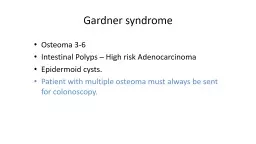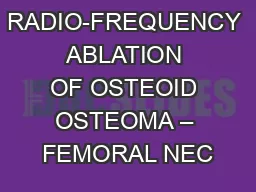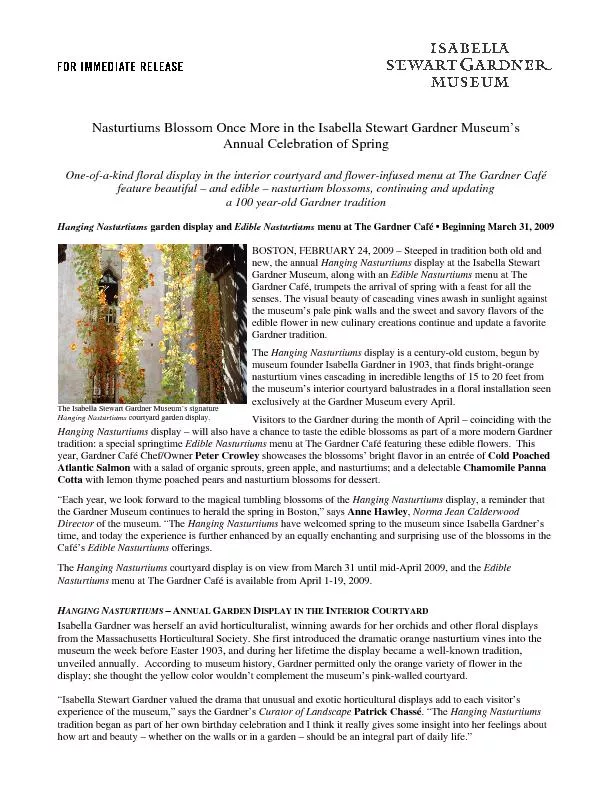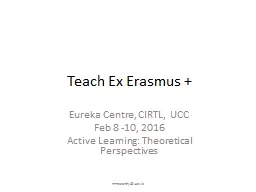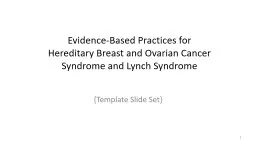PPT-Gardner syndrome Osteoma
Author : frogspyder | Published Date : 2020-10-22
36 Intestinal Polyps High risk Adenocarcinoma Epidermoid cysts Patient with multiple osteoma must always be sent for colonoscopy Benign Tumors Osteoblatoma Osteoblasts
Presentation Embed Code
Download Presentation
Download Presentation The PPT/PDF document "Gardner syndrome Osteoma" is the property of its rightful owner. Permission is granted to download and print the materials on this website for personal, non-commercial use only, and to display it on your personal computer provided you do not modify the materials and that you retain all copyright notices contained in the materials. By downloading content from our website, you accept the terms of this agreement.
Gardner syndrome Osteoma: Transcript
Download Rules Of Document
"Gardner syndrome Osteoma"The content belongs to its owner. You may download and print it for personal use, without modification, and keep all copyright notices. By downloading, you agree to these terms.
Related Documents

